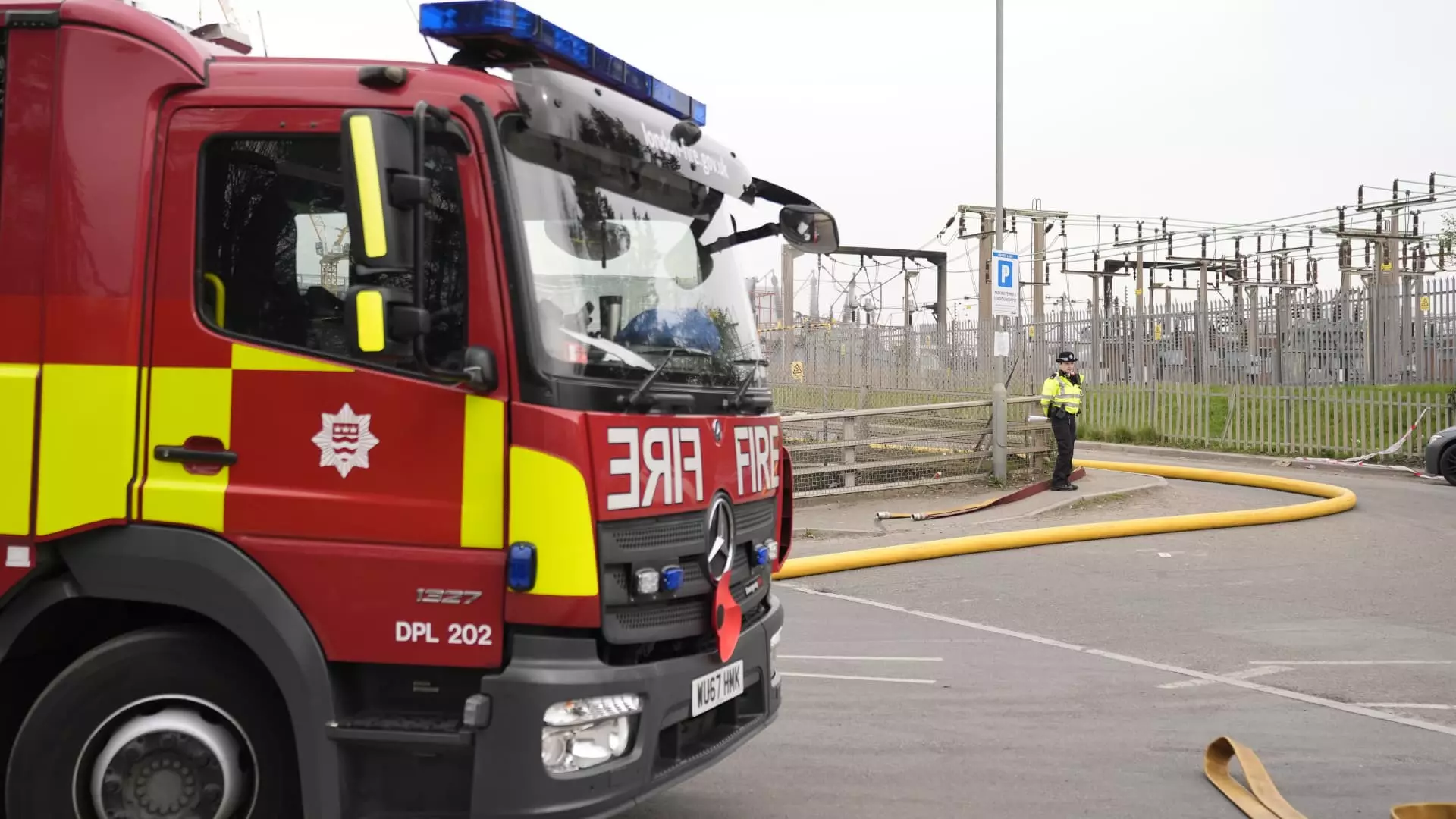The unexpected closure of London’s Heathrow Airport due to a fire on Friday serves as a stark wake-up call for the aviation industry, which has been rapidly growing yet woefully unprepared for crises. The incident, caused by a blaze at an electricity substation that compromised power supply, highlights a chilling reality: air travel infrastructure has not kept pace with the soaring demand for air travel. Anita Mendiratta, founder of the consultancy AM&A, succinctly articulated this sentiment, emphasizing the urgent need for the industry to bolster resilience in the face of unforeseeable disruptions, be they due to energy crises, geopolitical tensions, or climate events.
As we navigate our way in a world that demands more frequent and efficient air travel, these infrastructure inadequacies come to the fore. The reliance on a single power source at one of the world’s busiest airports is nothing short of alarming, marking a clear failure in planning. The echo of this inadequacy is not confined to Heathrow; it is a systemic issue that casts doubt on the very foundations of global aviation networks.
The Ripple Effects Beyond Flights
Mendiratta poignantly noted the far-reaching implications of the Heathrow incident, which extend beyond immediate flight cancellations. Understandably, passengers in transit or awaiting departure are the loudest voices in this crisis, but the reality is that the ramifications stretch into global supply chains. More than 4,000 tons of cargo traverse Heathrow each day, a fact often overshadowed by the numbers of passengers milling about the terminal. This incident illustrates that any disruption in one crucial node of the transportation network can reverberate worldwide, impacting businesses and consumers alike.
The stark truth is that aviation has witnessed exponential growth that is, ironically, unsustainable without investing in robust infrastructure capable of weathering crises. If the aviation sector is to remain a pillar of the global economy, substantial investments in energy resilience and disaster preparedness are more critical than ever. As passenger numbers are expected to rise an average of 3.8% annually until 2043, it is chilling to consider that the systems designed to support this growth are buckling under the pressure of their own inadequacies.
The Economic Fallout of Disruption
Heathrow’s closure not only leaves stranded passengers in a lurch but sends ripples through the economic landscape as companies grapple with the fallout. Investors concerned about cash flow and customer care will scrutinize how airlines manage short-term costs and long-term reputational damage. As Mendiratta pointed out, airlines may not be obligated to compensate passengers for cancellations stemming from what is deemed an “external” incident. This opens the door to potential frustration and loss of loyalty, jeopardizing customer retention—an essential element for any airline’s survival in today’s intensely competitive market.
Mendiratta’s insights light up a crucial aspect of this crisis, namely the immediate financial burden on passengers, who will need to seek accommodation, food, and possibly alternative travel options. However, the long-term implications of dissatisfaction do not just affect individual travelers; they could tarnish airlines’ reputations and affect investor confidence.
Infrastructure in the Age of Sustainability
An intriguing sidebar to the Heathrow debacle is the overdue discussion about expanding airport infrastructure, notably the controversial proposition of a third runway. British Finance Minister Rachel Reeves has declared that a third runway is “badly needed,” yet reaching that decision entails navigating through political minefields and public opinion. The resilience of our air travel system—unless we want it to become a house of cards—depends on a commitment to sustainable growth that prioritizes the integration of green technology, something Mendiratta alluded to as vital for the future of aviation.
Amid these challenges, the emergence of sustainable aviation fuel deals represents a beacon of hope. This shift aims not merely for profit but to ensure that the aviation industry can expand responsibly, thus covering the chasm between consumer demand and environmental accountability. The conversation around this must be taken seriously, for we exist at a crucial juncture that will determine whether future growth translates into a thriving, resilient aviation sector.
The lessons from Heathrow’s fire should not be merely filed away as another crisis but seen as an urgent call to action. If the aviation industry continues to overlook the foundations of its operations and neglect infrastructure resilience, the next crisis may not only bring airports to their knees but set back the entire industry further than any post-pandemic recovery could ever speed up.


Leave a Reply